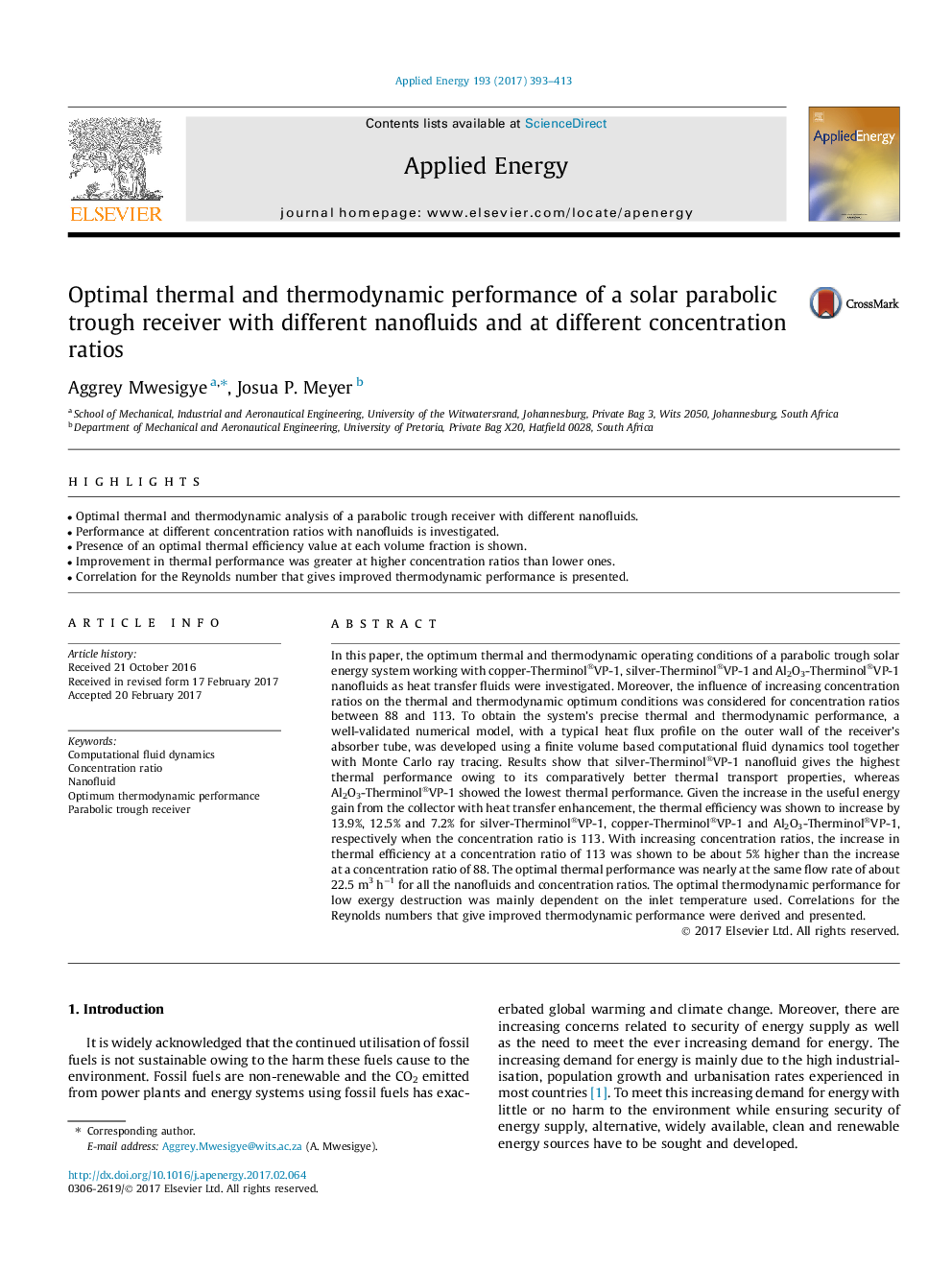| کد مقاله | کد نشریه | سال انتشار | مقاله انگلیسی | نسخه تمام متن |
|---|---|---|---|---|
| 4916312 | 1428097 | 2017 | 21 صفحه PDF | دانلود رایگان |
عنوان انگلیسی مقاله ISI
Optimal thermal and thermodynamic performance of a solar parabolic trough receiver with different nanofluids and at different concentration ratios
ترجمه فارسی عنوان
عملکرد ترمودینامیک حرارتی و ترمودینامیکی یک گیرنده بخار خورشیدی با نانوسیم های مختلف و با نسبت های مختلف غلظت
دانلود مقاله + سفارش ترجمه
دانلود مقاله ISI انگلیسی
رایگان برای ایرانیان
کلمات کلیدی
دینامیک سیالات محاسباتی، نسبت غلظت، نانو سیال، عملکرد ترمودینامیکی بهینه، گیرنده پارابولیک،
موضوعات مرتبط
مهندسی و علوم پایه
مهندسی انرژی
مهندسی انرژی و فناوری های برق
چکیده انگلیسی
In this paper, the optimum thermal and thermodynamic operating conditions of a parabolic trough solar energy system working with copper-Therminol®VP-1, silver-Therminol®VP-1 and Al2O3-Therminol®VP-1 nanofluids as heat transfer fluids were investigated. Moreover, the influence of increasing concentration ratios on the thermal and thermodynamic optimum conditions was considered for concentration ratios between 88 and 113. To obtain the system's precise thermal and thermodynamic performance, a well-validated numerical model, with a typical heat flux profile on the outer wall of the receiver's absorber tube, was developed using a finite volume based computational fluid dynamics tool together with Monte Carlo ray tracing. Results show that silver-Therminol®VP-1 nanofluid gives the highest thermal performance owing to its comparatively better thermal transport properties, whereas Al2O3-Therminol®VP-1 showed the lowest thermal performance. Given the increase in the useful energy gain from the collector with heat transfer enhancement, the thermal efficiency was shown to increase by 13.9%, 12.5% and 7.2% for silver-Therminol®VP-1, copper-Therminol®VP-1 and Al2O3-Therminol®VP-1, respectively when the concentration ratio is 113. With increasing concentration ratios, the increase in thermal efficiency at a concentration ratio of 113 was shown to be about 5% higher than the increase at a concentration ratio of 88. The optimal thermal performance was nearly at the same flow rate of about 22.5Â m3Â hâ1 for all the nanofluids and concentration ratios. The optimal thermodynamic performance for low exergy destruction was mainly dependent on the inlet temperature used. Correlations for the Reynolds numbers that give improved thermodynamic performance were derived and presented.
ناشر
Database: Elsevier - ScienceDirect (ساینس دایرکت)
Journal: Applied Energy - Volume 193, 1 May 2017, Pages 393-413
Journal: Applied Energy - Volume 193, 1 May 2017, Pages 393-413
نویسندگان
Aggrey Mwesigye, Josua P. Meyer,
